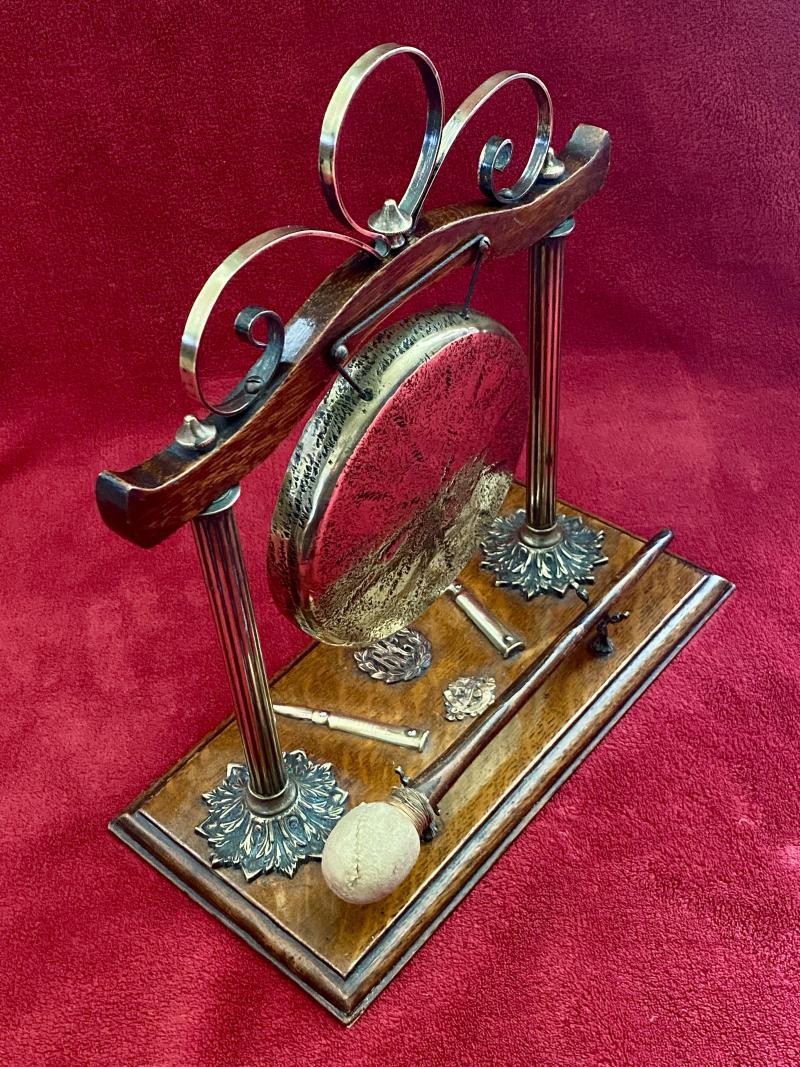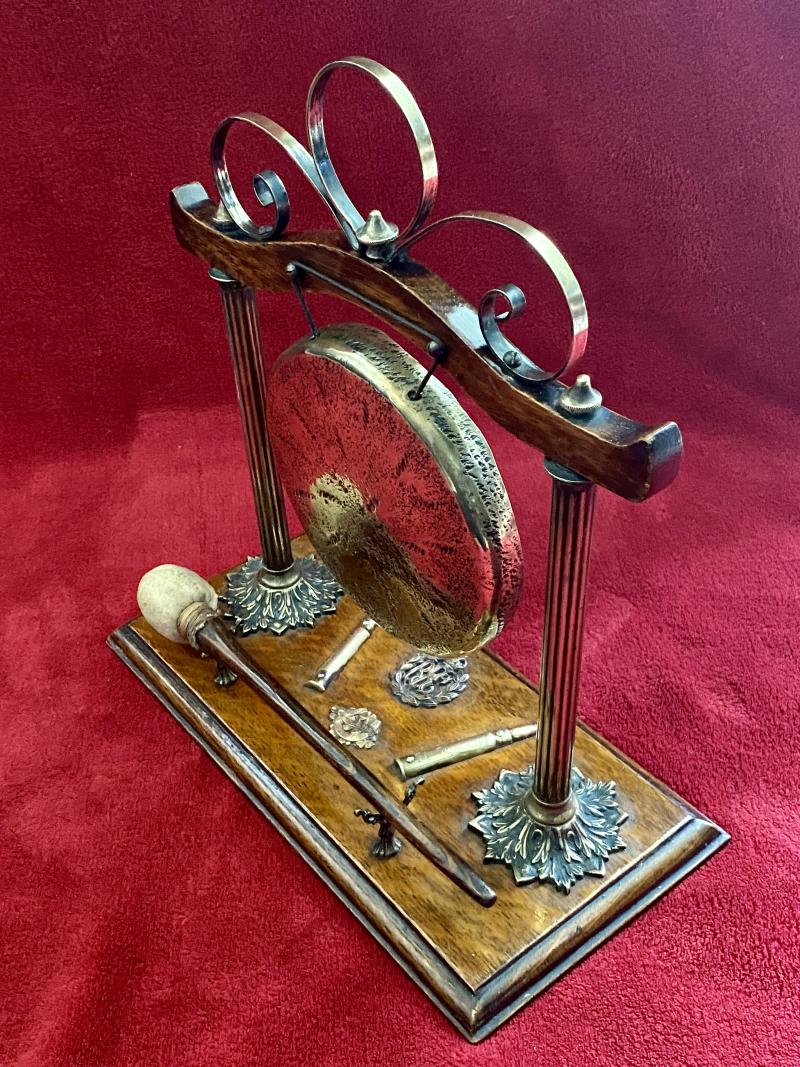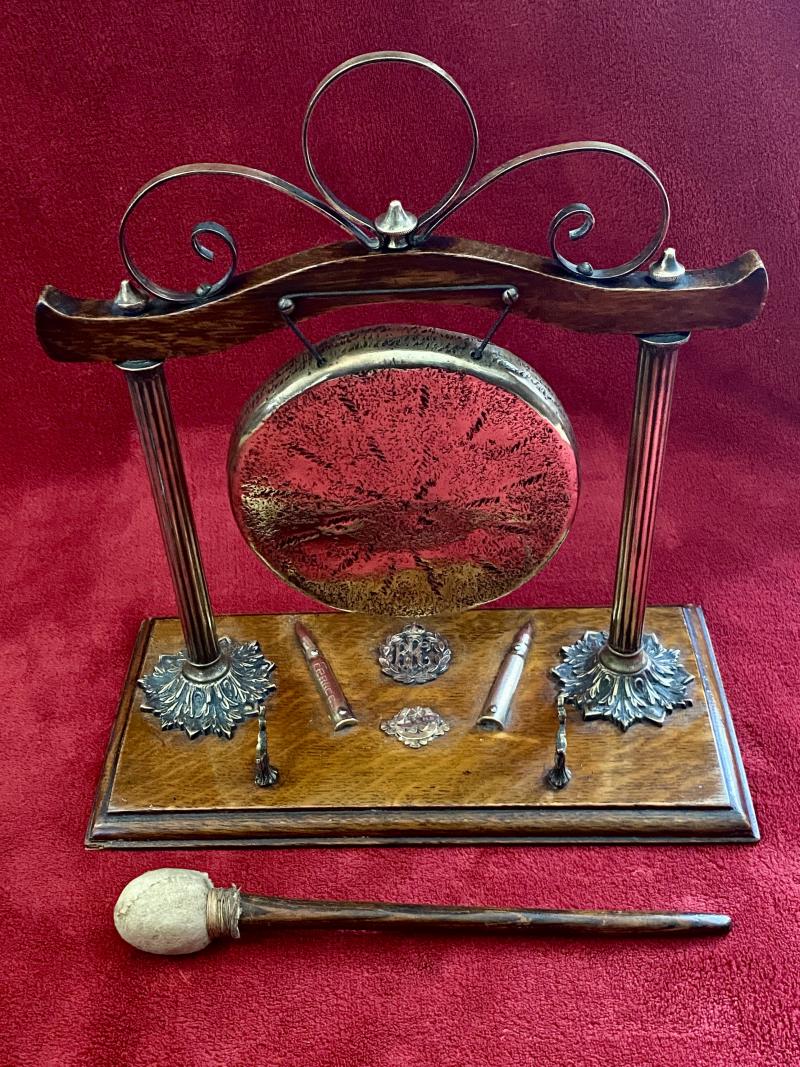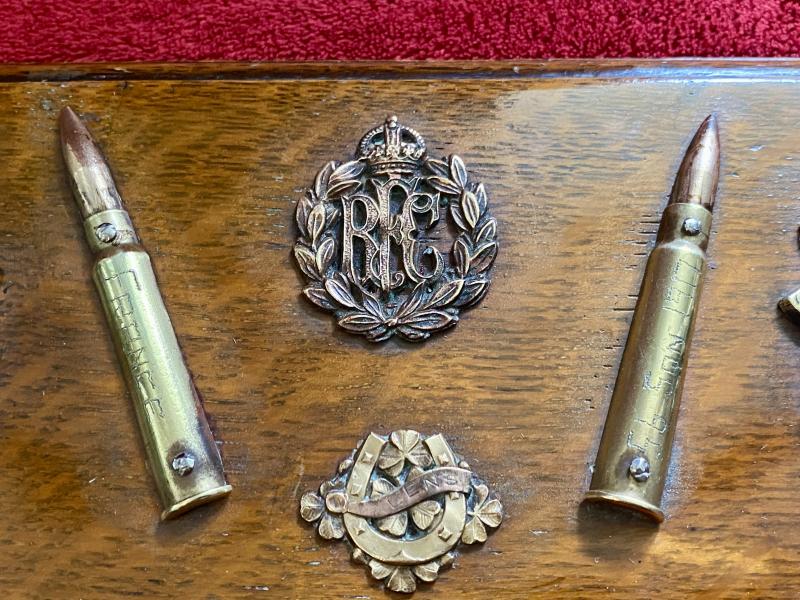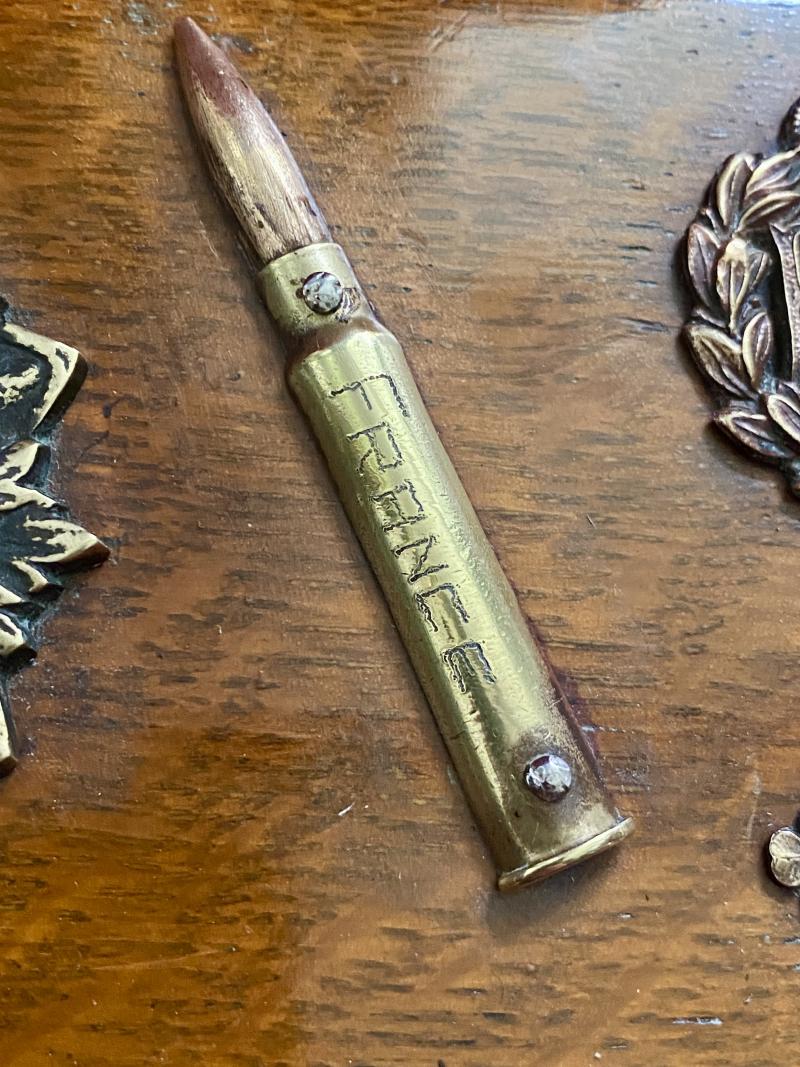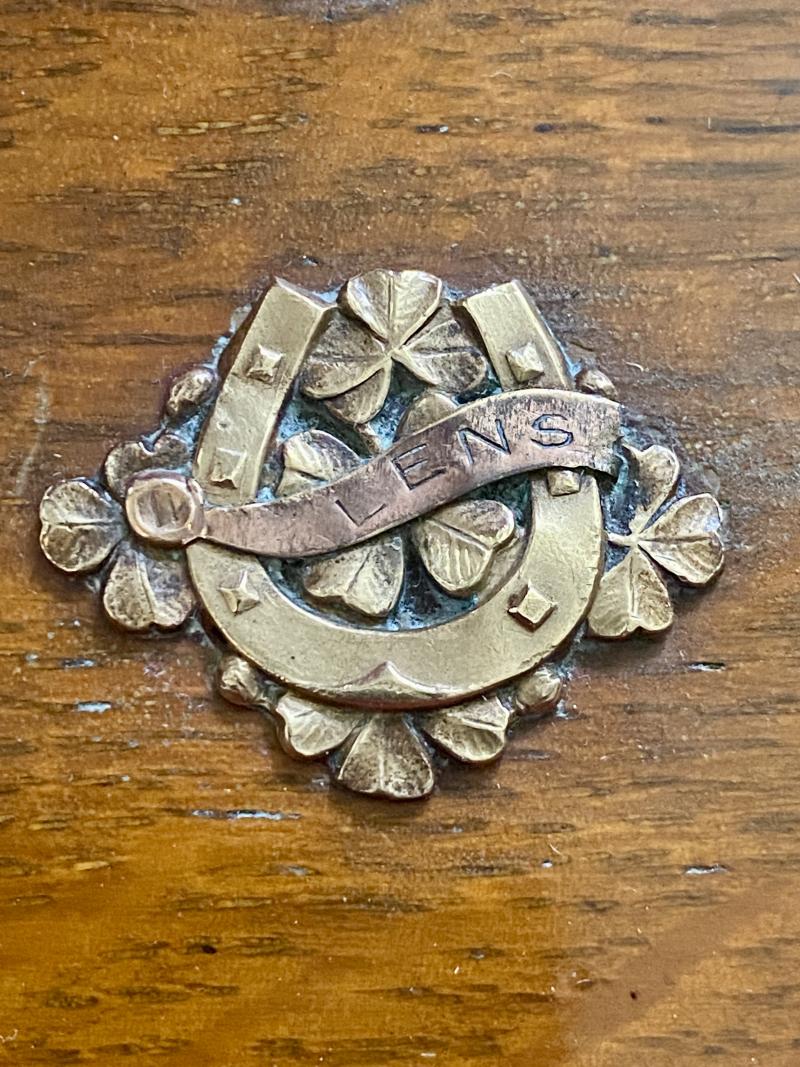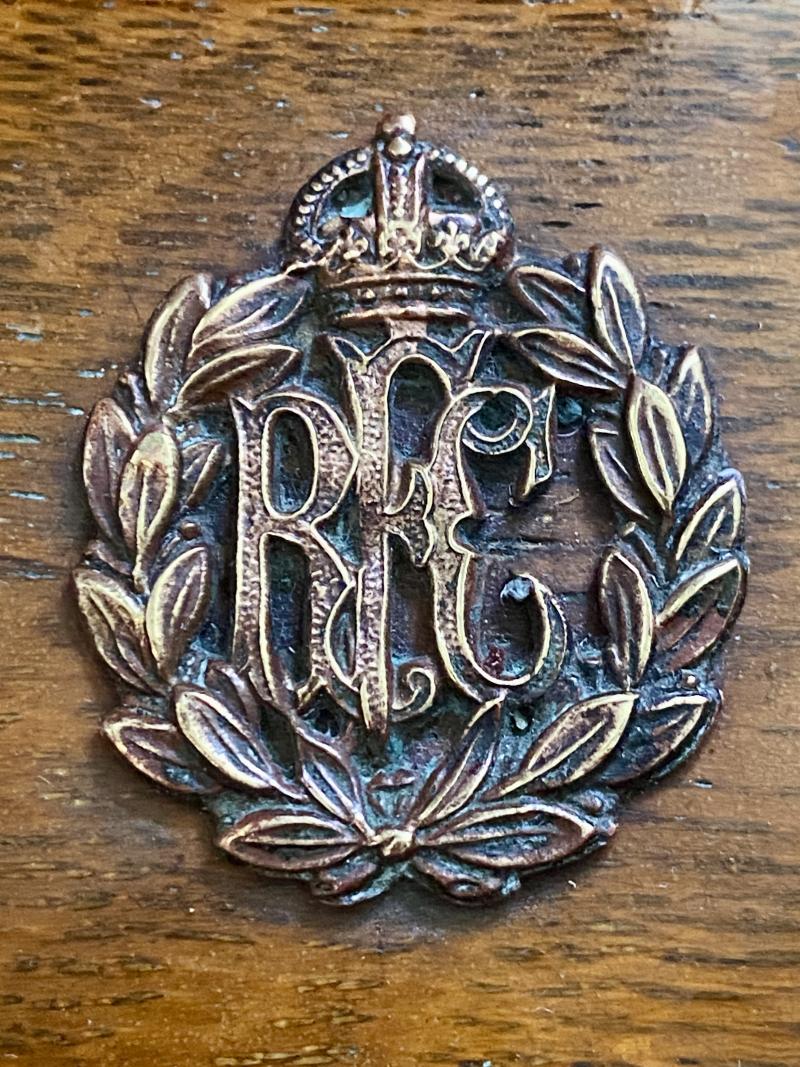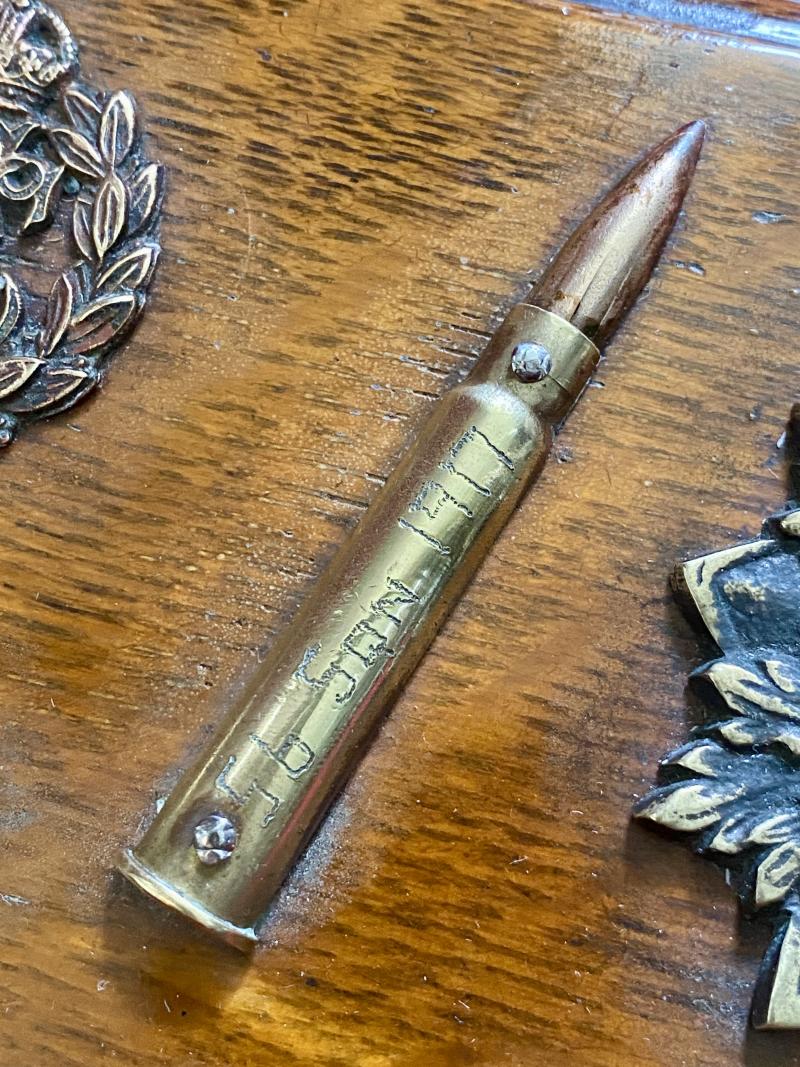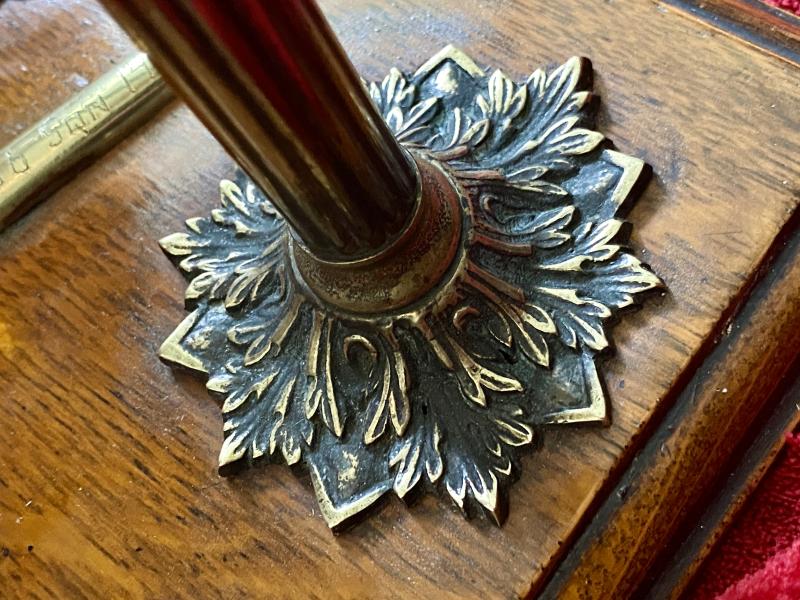Rare WW1 Royal Flying Corps (RFC) No. 56 Squadron – LENS - Mess Dinner Gong - 1917
Here on offer is a rare WW1 Royal Flying Corps, mess dinner gong that relates to the legendary RFC No. 56 fighter squadron.
I was told this came from an airfield mess room of No. 56 Squadron that was used while they were operating in France in 1917. However, I don’t have any provenance to support this claim, so I am unsure if this was a personal item or actually came from an airfield mess room.
It is constructed from ornate cast brass fittings, set onto a solid oak wood base and probably originally dates to the late Victorian or early Edwardian period.
It still retains its original soft mallet that produces a lovely soft tone when used against the brass gong/disc.
The oak base has been fitted with a RFC cap badge, a gilt and gold horseshoe badge marked LENS (France) and two halves of a bullet, one engraved FRANCE and the other 56 SQUADRON 1917.
During WW1, the squadron had many aces amongst its ranks such as James McCudden, Albert Ball, Reginald Hoidge and Arthur Rhys-Davids, developing a fierce reputation for the unit.
There is a WW1 connection of this dinner gong and the French town of LENS.
The famous fighter ace, Albert Ball shot down two Albatros D.III aircraft on the 5th May (see table below) between Lens and Carvin, just two days before he was killed in action.
Therefore, it is possible this was a memorial piece, made to honour Albert Ball, who knows?
Kill 42 - 5 May 1917 between 1830 and 1900 hours Royal Aircraft Factory S.E.5 s/n A8898 Albatros D.III Destroyed Lens- Carvin
Kill 43 - 5 May 1917 between 1830 and 1900 hours Royal Aircraft Factory S.E.5 s/n A8898 Albatros D.III Destroyed Lens-Carvin
No. 56 Squadron was formed on 8 June 1916 at Gosport, from members of No. 28 Squadron, as part of the Royal Flying Corps (RFC). On 14 July, the squadron relocated to London Colney.
Captain Albert Ball joined No. 56 Squadron as a Flight Commander in February 1917. On 13 March 1917, the squadron became the first unit in the entire RFC to be equipped with the then brand-new S.E.5 fighter aircraft.
On 31 March, No. 56 Squadron received orders to relocate to the RFC HQ at Saint-Omer, France. From Saint-Omer, the squadron relocated to Vert Galant on 20 April to support the Second Battle of Arras and flew their first mission on the 22 April.
Albert Ball scored No. 56 Squadron's first kill, his 32nd, on 23 April, when he shot down an Albatros D.III. The squadron suffered its first loss on 30 April when Lieutenant Maurice Alfred Kay was shot down.
Albert Ball himself was killed in action on 7 May, the same day as Lieutenant Roger Michael Chaworth-Musters.
No. 56 Squadron was sent north to Estree-Blanche on 31 May 1917, to provide support for the upcoming Battle of Messines. From May 1917, the Germans began bombing London using their new Gotha G.IV bombers. In response to this, No. 56 Squadron was recalled back to England and based at RFC Bekesbourne on 21 June.
The squadron participated in the Battle of Passchendaele, marking numerous victories throughout it. Captain James McCudden, eventual highest scoring pilot of the squadron, joined on 13 August. Rhys-Davids made his final sortie on 27 October 1917, taking off for a routine patrol he chased after a group of Albatross fighters after which he was never seen again.
On 18 November, No. 56 Squadron was relocated to Lavieville in support of the Battle of Cambrai. In December 1917, McCudden scored 14 victories – including 4 on 23 December, a first for the RFC.
In January 1918, the squadron moved to Baizieux. McCudden was sent back to England on 5 March, where he was promoted to Major and received the Victoria Cross, he died on 9 July in an accident while on his way to take command of No. 60 Squadron.
On 21 March, the Germans began their Spring Offensive, this forced No. 56 Squadron to pull back to Valheureux, where from they conducted air-to-air patrols for the next four months. The squadron supported the buildup to and provided support during the Battle of Amiens.
On 1 August, No. 56 Squadron, in tandem with No. 3 Squadron, attacked a German aerodrome in which 6 hangars and 16 enemy aircraft were destroyed.
By the end of WW1, No. 56 Squadron had scored 427 victories, at a cost of 40 pilots killed, 20 wounded and 31 taken prisoner.
This rare piece is in excellent condition with a nice age patina to the brass. There is just a tiny piece missing from the tip of one of the mallet rests and the mallet suede cloth has a couple of patches missing.
The dinner gong measures approximately 13" (33cm) high and the base measures 12" (30.5cm) x 6" (15.3cm).
It weighs a heavy 1.3Kg.
Please see my pictures for the details of the condition, which complement this description.
Please see my TERMS OF BUSINESS regarding Deliver Charges and Insurance regarding additional insurance cover, should you require it, BEFORE the item is dispatched.
The responsibility lies with the customer to check with your Customs restrictions that this item can be imported into your country.
Thank you for taking the time to look.
Code: 51273


